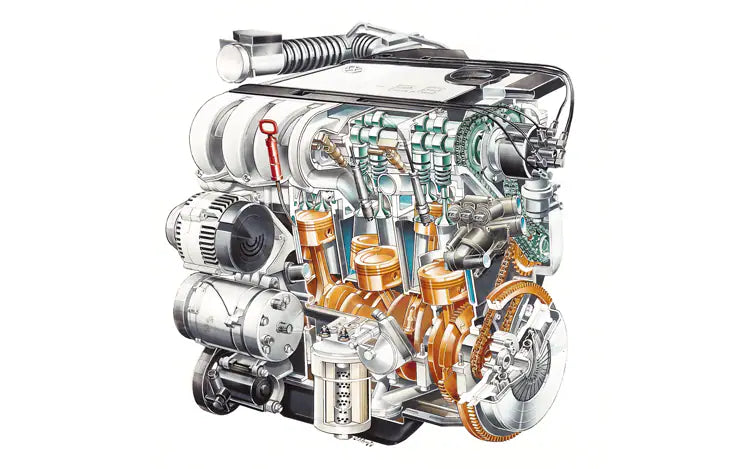They say that beauty is in the eye of the beholder, and when it comes to classic cars the subjects of originality and patina are likely to divide opinions on the matter. You say barn find, I say wreck; but it depends on what’s in the barn, and that too is a matter of taste. Enough of that though, to my mind a great car is a great car regardless of how many holes it has in its socks. Being able to rock the pockmarks of age with any amount of style still intact isn’t a thing that just any car can do—look at plasticky ‘90s cars that have sat in the sun—but when my friends down at Cotswold Collector Cars invited me down to have a nose at a fairly unmolested Maserati 3500 GT, I knew that this was certainly a car that could wear its weather-beaten rain jacket with grace.




The GT needs little introduction as a looker, but it was also arguably the car that saved Maserati when the company was in somewhat of a decline after ending its relationship with racing following the tragedy in Guidizzolo. The team in Modena needed to start selling cars by the hundreds rather than the handful, which was all that was being managed with the current A6 series road cars. Giulio Alfieri led the project, which was aimed squarely at the GT market, but used the marque’s racing knowledge to produce a comfortable yet genuinely swift machine. With a Carozzeria Touring-designed body with superleggera construction, the car was certainly up its countrymen’s standards in terms of aesthetic impact and craftsmanship, and with a 3.5L straight-six adapted from the their 350S endurance racer, the 3500 GT would have 217 horses to pull itself comfortably along.








The car that I had come to see was one of the few RHD models produced by the factory, and in fact just 40 such cars are believed to have been built. Adding to its rarity, this particular car was held under the same ownership from new for some 52 years; few of us stay married for that long, never mind keep hold of a car for that much time! ESU600 was purchased by Andrew Peterson, in London in 1964 to be enjoyed as a daily driver for work and family trips, which it was, until 1971 when a growing family forced him to retire the car for something more suitable for the size of the household.
They didn’t sell it though, and so after 17 years of being parked in the garage and with the kids all grown up, the gorgeous red Maserati would get to enjoy the sun upon its hackles once again, albeit a little more tired than it was. Another 19 years of motoring were enjoyed in the venerable old tourer, before the owner finally reconciled with the fact that the car that was built in 1960 (sold in ’64) needed a life-prolonging elixir in the form of a ground-up restoration at Bill McGrath Maserati.




Thankfully, the cost of the plastic surgery was too vast, and so a mechanical restoration of the engine and other vital components was undertaken instead, still to the tune of £35,000. The car as it sits today is a wonderful time capsule of a machine well-used but running more youthfully than its years would suggest. Its tired paint and bodywork tell the story of a thousand road trips, of excursions to the seaside or perhaps adventures in the lakes and hills of Cumbria. The leather of the seats is worn but comfortable, and as I run my hands over the rough shod body, I am treated to a myriad of textures and imperfections. Each recite a story, sometimes small and unexotic ones like a rock chip on a highway, but it is left to my imagination to fill in the narratives of the marks on this car. I enjoy this sort of fantasy, and while plenty will consider it foolish, I much prefer this sort of dalliance than simply reading the an information plaque placed in front of a fully-restored museum piece.






Each have their place of course, but my current flirtations with this car continue as I slide into the car and fire the engine up. The mechanically fresh block eases into action smoothly and settles quickly. The cabin is less spacious than one might imagine in a vehicle of this size, a trick of the eye perhaps, especially in the back, but the drive is comfy enough and has a certain idyllic feel about it. It’s a thoroughly enjoyable place to be, and the braille of the bodywork continues into the worn surroundings of the interior. Personal touches, such as the St. Christopher pressed into the top of the wooden gear knob, remind you that this is a car well-travelled, although I must admit to not being as keen on the less-than-period-correct cassette player.




This GT won’t be the tonic of choice for everyone, and that’s fine, horses for courses and all that, but what can be agreed upon is that this example is a fabulous, quixotic vision of not just a Maserati, but a sports car in general that has been used and enjoyed to its fullest extent. Though a full restoration would certainly have left this as a very nice item to own, having it here as it stands now is much better. It tells wonderful stories, without actually telling you much at all, and I quite like that.
























































